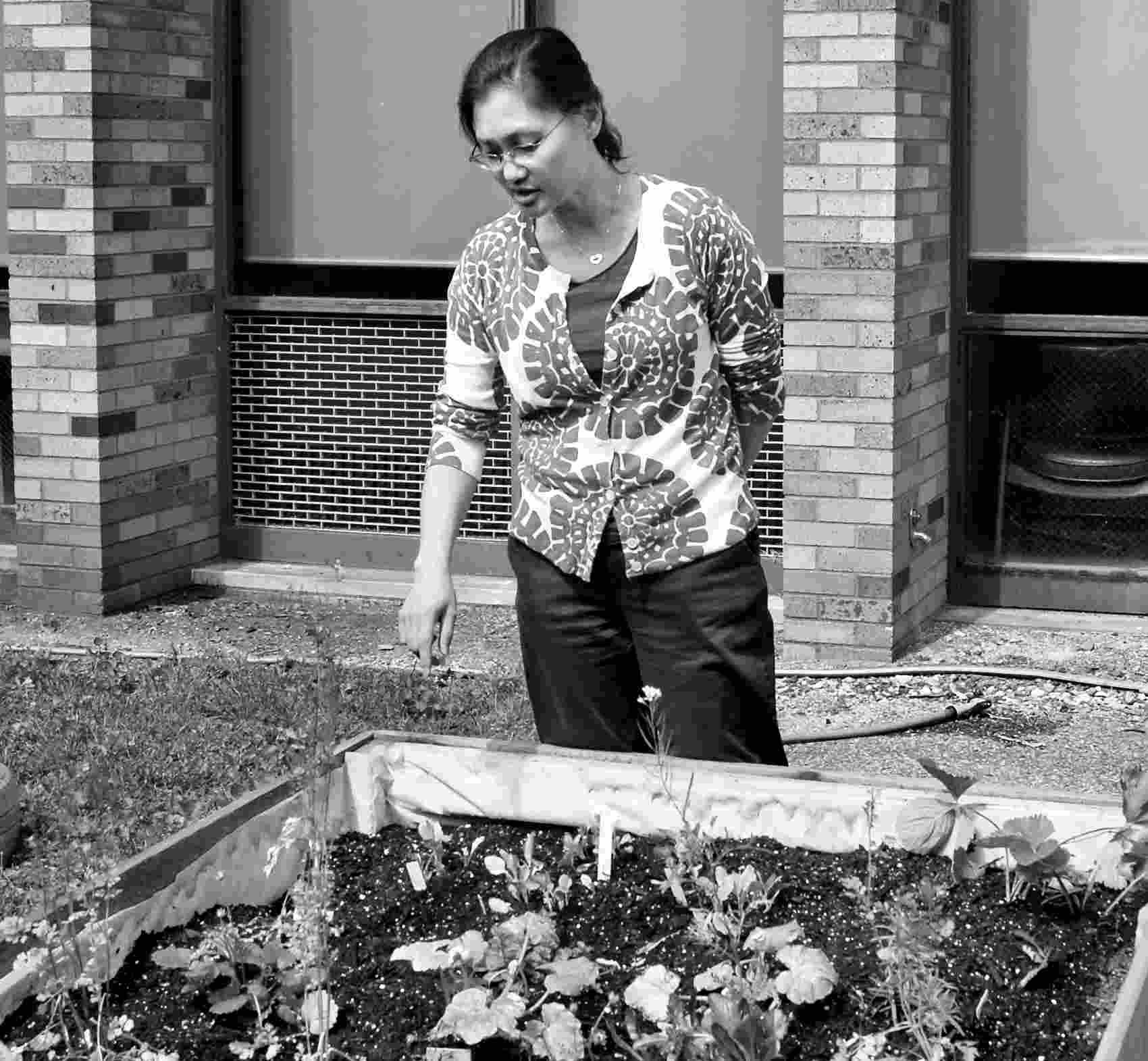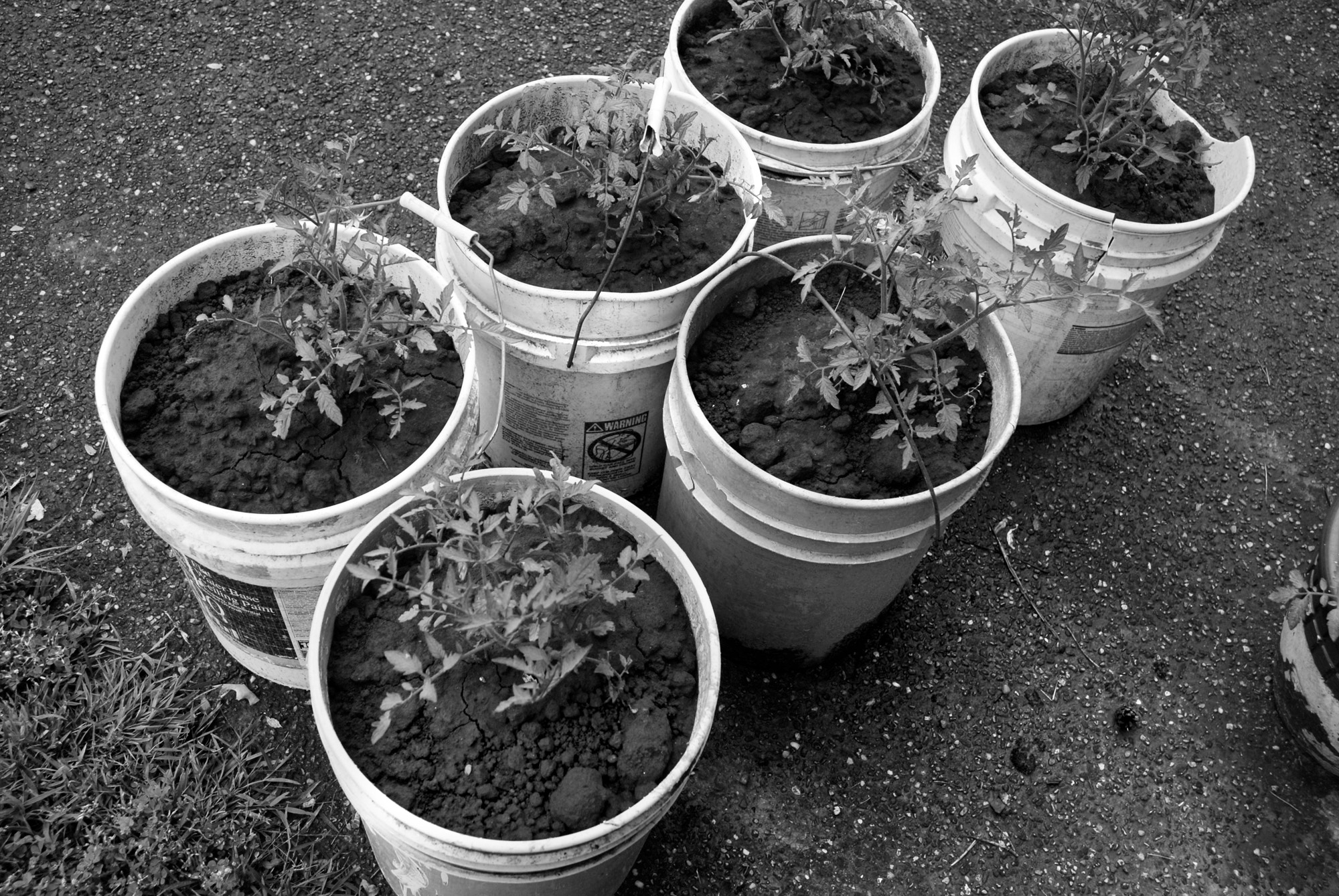
Food in America has undergone a transformation over the past 71 years since OSF Sisters Community Healthcare Center opened its doors for uninsured and low-income patients. In 1942, Americans were cultivating “War Gardens,” canning fruit and vegetables, and only occasionally eating in restaurants. The term “fast food” hadn’t been invented. Poverty was characterized by thinness. Federal food assistance excluded soda, candy and processed food.

That changed in 1964 when the Food Stamp program began, and corporations successfully lobbied Congress to include big money making items like soda, candy and snack foods. Obesity came to characterize poverty and triggered a tsunami of chronic conditions undermining health. Today, 68 percent of Americans are obese. The OSF sisters’ clinic sees 26,000 patients a year, and many are obese.
Squarely facing off against this formidable problem is a cheerful and determined collaboration of three medical professionals and their five, newly-installed raised garden beds filling up with herbs, tomato plants, collards, peppers and more . . . all growing under the watchful eyes of curious patients in the clinic’s exam rooms.
“Patients looked out and watched the garden take shape. We’re encouraging them to ask questions about the garden,” said Dr. Caroline Kim Kupfer, medical director at the clinic, 320 E. Armstrong Ave. “This is a demonstration garden to spread knowledge about how healthy gardening is.”
Produce from the garden will be given to patients at the clinic and used by the hospital food service.
In addition to the raised beds, tomato plants are growing in five-gallon buckets and other containers. Patients will be encouraged to take a container home and see how productive one or two tomato plants in the backyard can be. Some containers will be as simple as burlap bags filled with soil.
Kim Kupfer said patients at the clinic often have two jobs and may take a bus to the clinic. They have little time. In the moments when they are waiting for their bus home or back to work, the clinic may be able to schedule brief, five-minute cooking demonstrations showing how to cook fresh produce.
Kim Keenan, a social worker at the clinic, said, “Our hope is to improve the physical lives of people at the clinic.”
Golda Ewalt, director of the dietetic internship program at OSF, can walk across the complex with her young interns from her offices in the main hospital.
“This is a dream-come-true for me,” she said. “Anything we can do to encourage local produce in the diet. It’s the freshest, tastiest and healthiest.”
Keenan is nearing completion of a doctoral program in eco-psychology and said the research is no longer just anecdotal. Over the past 10 to 20 years, research has shown when produce is grown locally, it has greater health benefits than produce shipped thousands of miles and hybridized to extend the shelf life.
“Eating fresh produce is good, certainly better than chips, but a local apple is better than an apple from the Northwest,” Keenan said, citing research that shows food grown in local soils where it is consumed has more measurable health benefits affecting, for example, blood sugar levels and blood pressure.
“Food acclimates to the environment,” she said.
Following World War II, the American diet came to rely on mass production, convenience food, fast food and more processed food.
“Hospital-based research shows patients exposed to a garden do better physically and emotionally,” Keenan said.
Peggy Hamilton, a patient at the clinic, said the new raised-bed gardens are a wonderful teaching tool.
“A lot of people over 50 may not be able to garden. A lot of people don’t have room for a garden and don’t have access to a community garden,” she said, adding that she is active in the community garden behind St. Bernard’s Church.
Hamilton is helping to make instructional signs indicating which herbs are high in antioxidants, which are anti-fungal and which, for example, aid digestion.
“Many people used to have access to fresh produce through the Share program, but that closed years ago,” she said. “Children especially need to learn the importance of fresh produce for health and wellness. Their grandparents might have had big gardens, but people have gotten away from that.”
Ewalt and her dietetic interns work at the new sisters’ clinic garden and volunteer each Saturday morning June through September at Peoria Riverfront Market processing LINK cards for food stamp spending, and they double the value for every $25 in food stamps with an additional $25 from the Wholesome Food Fund, Community Foundation of Central Illinois. They distribute recipes, give cooking demonstrations and hand out samples of seasonal food. Then they watch children who have never heard of kale, kohlrabi or spaghetti squash overcome their fears and taste these new foods, usually surprising themselves by actually liking them!
Introducing fresh seasonal produce to children can change their lifetime eating habits, Ewalt said, noting “That is something much bigger than we are.”

Recent Comments